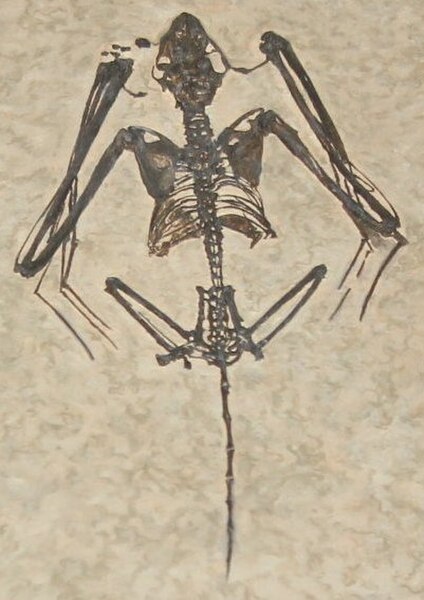The pallid bat is a species of bat that ranges from western Canada to central Mexico. It is the sole species of its genus and is closely related to Van Gelder's bat, which is sometimes included in Antrozous. Although it has in the past been placed in its own subfamily (Antrozoinae) or even family (Antrozoidae), it is now considered part of the subfamily Vespertilioninae and the tribe Antrozoini.
Pallid bat
A colony of roosting A. pallidus at Madera Canyon, Santa Rita Mountains, southeastern Arizona
Wingspan of the pallid bat
Bats are flying mammals of the order Chiroptera. With their forelimbs adapted as wings, they are the only mammals capable of true and sustained flight. Bats are more agile in flight than most birds, flying with their very long spread-out digits covered with a thin membrane or patagium. The smallest bat, and arguably the smallest extant mammal, is Kitti's hog-nosed bat, which is 29–34 millimetres in length, 150 mm (6 in) across the wings and 2–2.6 g in mass. The largest bats are the flying foxes, with the giant golden-crowned flying fox reaching a weight of 1.6 kg and having a wingspan of 1.7 m.
Bat
The early Eocene fossil microchiropteran Icaronycteris, from the Green River Formation
Giant golden-crowned flying fox, Acerodon jubatus
"Chiroptera" from Ernst Haeckel's Kunstformen der Natur, 1904







